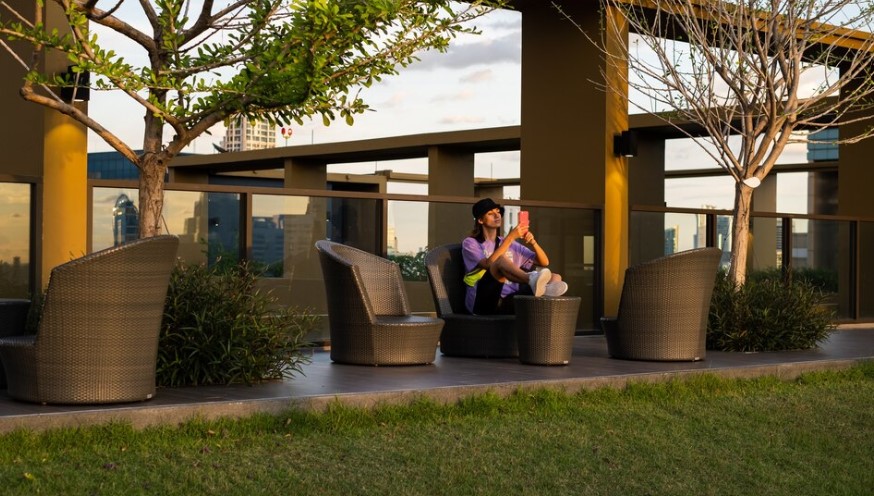As the world becomes more eco-conscious, sustainable landscaping is emerging as a popular way for homeowners to create beautiful, functional outdoor spaces that benefit both the environment and their own well-being. By incorporating eco-friendly practices into your landscape design, you can reduce water consumption, minimize waste, and create a backyard that works in harmony with nature. Here’s how to transform your outdoor area into a sustainable haven. For more information check out landscaping companies in dubai
1. Use Native and Drought-Tolerant Plants
Choosing the right plants is the foundation of any sustainable landscape. Opt for native plants that are well-adapted to your local climate and soil conditions. These plants require less water, fertilizer, and maintenance, which reduces both your water bill and environmental impact. Drought-tolerant species, like succulents and ornamental grasses, are especially ideal in regions with low rainfall. Not only do they thrive in dry conditions, but they also add unique texture and color to your garden.
Pro Tip: Group plants with similar water needs together, a practice known as “hydrozoning,” to maximize water efficiency.
2. Install Efficient Irrigation Systems
Water conservation is a key component of sustainable landscaping. Traditional irrigation systems often waste water due to evaporation or runoff. Switching to a drip irrigation system or using soaker hoses delivers water directly to the roots, reducing waste. Smart irrigation controllers are another excellent addition, allowing you to adjust watering schedules based on weather conditions. Installing rain barrels or cisterns to collect and reuse rainwater for your garden is another easy way to conserve resources.
3. Incorporate Composting
Composting is a natural way to reduce waste and improve the health of your garden. By recycling kitchen scraps, grass clippings, and yard waste, you can create rich, organic compost that nourishes your soil. Compost improves soil structure, helps retain moisture, and reduces the need for chemical fertilizers, making it a sustainable option for any garden. Even better, composting reduces the amount of waste sent to landfills, contributing to a healthier environment overall.
Pro Tip: Layer green materials (like fruit and vegetable scraps) with brown materials (like leaves and twigs) for optimal composting results.
4. Opt for Permeable Hardscaping
When designing pathways, patios, or driveways, consider using permeable materials such as gravel, stone, or permeable pavers. Unlike traditional concrete, which prevents water from seeping into the ground, permeable hardscapes allow rainwater to filter through, replenishing groundwater supplies and reducing stormwater runoff. This approach helps prevent soil erosion and decreases the risk of flooding, making it a smart choice for eco-friendly outdoor spaces.
5. Reduce Lawn Size
Lawns, while visually appealing, often require excessive water, fertilizers, and pesticides to maintain. Reducing the size of your lawn or replacing it entirely with ground cover, wildflowers, or low-maintenance plants can significantly cut down on water usage and chemical treatments. If you want to keep some lawn, consider planting drought-resistant grass varieties that require less water and are more resilient to changing weather conditions.
Pro Tip: Artificial turf, while low-maintenance, is not always the most sustainable choice due to its synthetic materials and lack of environmental benefits. Instead, look for native ground cover plants that naturally thrive in your region.
6. Create Wildlife Habitats
Designing your landscape with local wildlife in mind can enhance biodiversity and create a vibrant ecosystem. Planting pollinator-friendly flowers, such as lavender, coneflower, and bee balm, attracts bees, butterflies, and other beneficial insects to your garden. Incorporating bird feeders, nesting boxes, and water sources like birdbaths will invite birds and other wildlife to make your backyard their home. Native plants are especially important in attracting and supporting local wildlife, as they provide food and shelter for various species.
7. Use Sustainable Materials
When constructing decks, fences, or outdoor furniture, choose materials that are both durable and eco-friendly. Reclaimed wood, recycled metal, and bamboo are sustainable alternatives to traditional building materials. These materials reduce waste and lower the environmental impact of your landscape project. Additionally, using natural stone for pathways and garden borders adds an organic, sustainable touch to your outdoor space.
8. Mulch to Save Water
Applying a layer of organic mulch to your garden beds is one of the simplest and most effective ways to conserve water. Mulch helps retain soil moisture, suppresses weeds, and regulates soil temperature. As it decomposes, mulch also adds nutrients to the soil, promoting healthy plant growth. Organic mulches like wood chips, bark, and straw are ideal choices for eco-friendly landscaping.
9. Embrace Renewable Energy
Incorporating renewable energy sources into your landscape design can further enhance its sustainability. Solar-powered garden lights, water features, and outdoor heaters are energy-efficient alternatives that reduce reliance on electricity and lower your carbon footprint. Solar lights, in particular, are easy to install and require no wiring, making them a practical addition to any eco-conscious garden.
10. Design with Longevity in Mind
Sustainable landscaping isn’t just about short-term solutions—it’s about creating a landscape that will thrive for years to come. Consider the long-term maintenance requirements of your design, and choose plants, materials, and systems that are built to last. Low-maintenance, drought-tolerant plants and durable hardscaping materials will ensure that your outdoor space remains eco-friendly with minimal upkeep.
Final Thoughts
Creating a sustainable landscape is not only beneficial for the environment, but it also offers long-term savings and a more enjoyable outdoor experience. By incorporating native plants, conserving water, using sustainable materials, and designing with wildlife in mind, you can transform your backyard into an eco-friendly oasis that thrives in harmony with nature. Sustainable landscaping is a win-win for both you and the planet.

